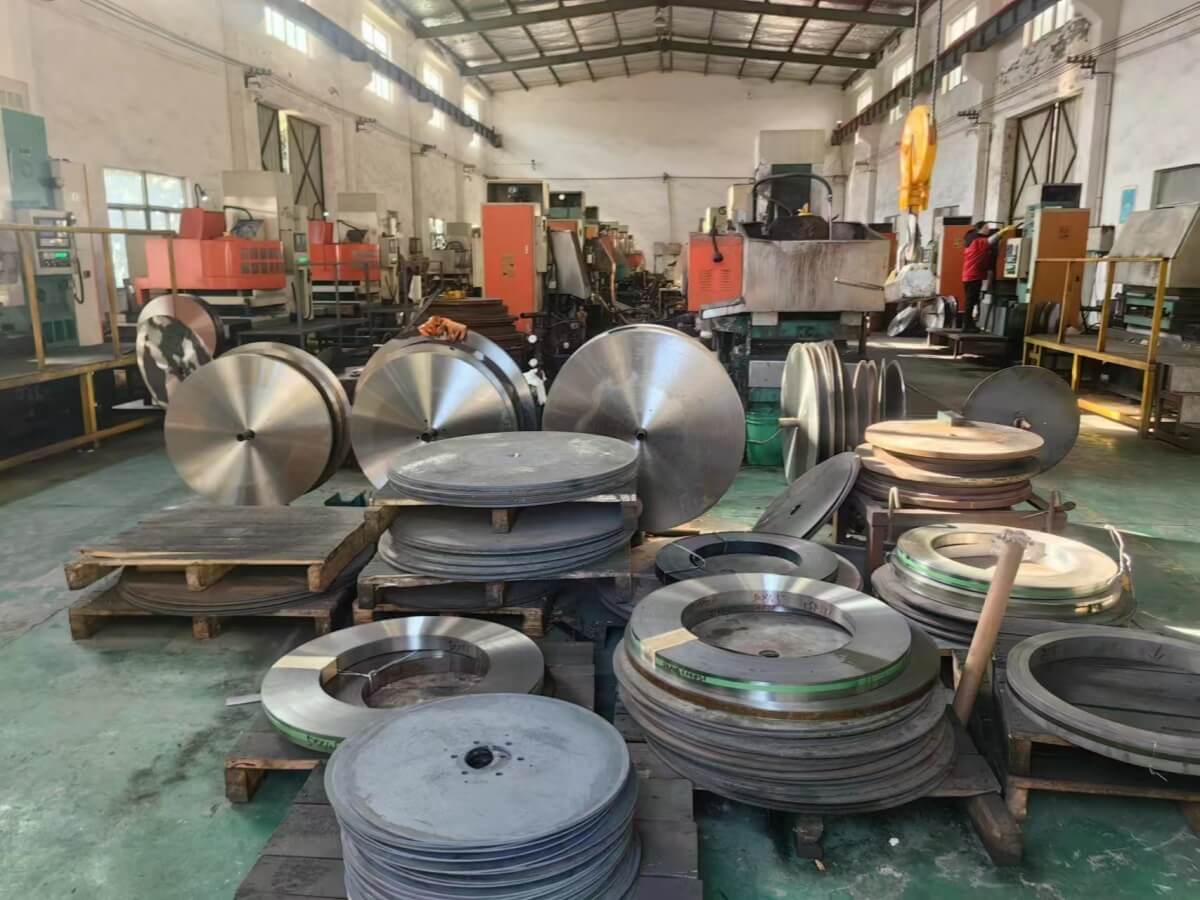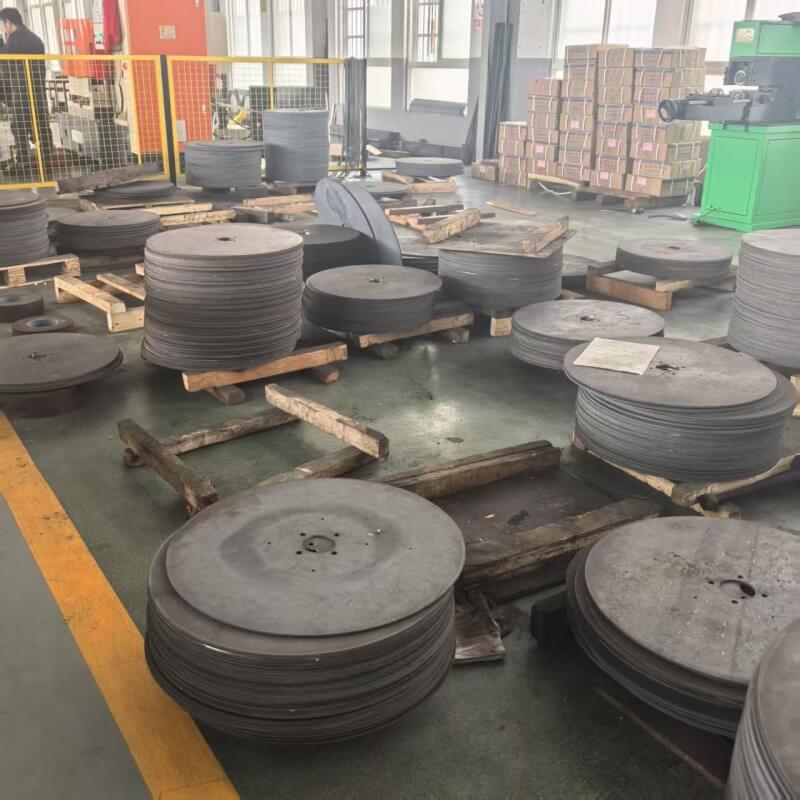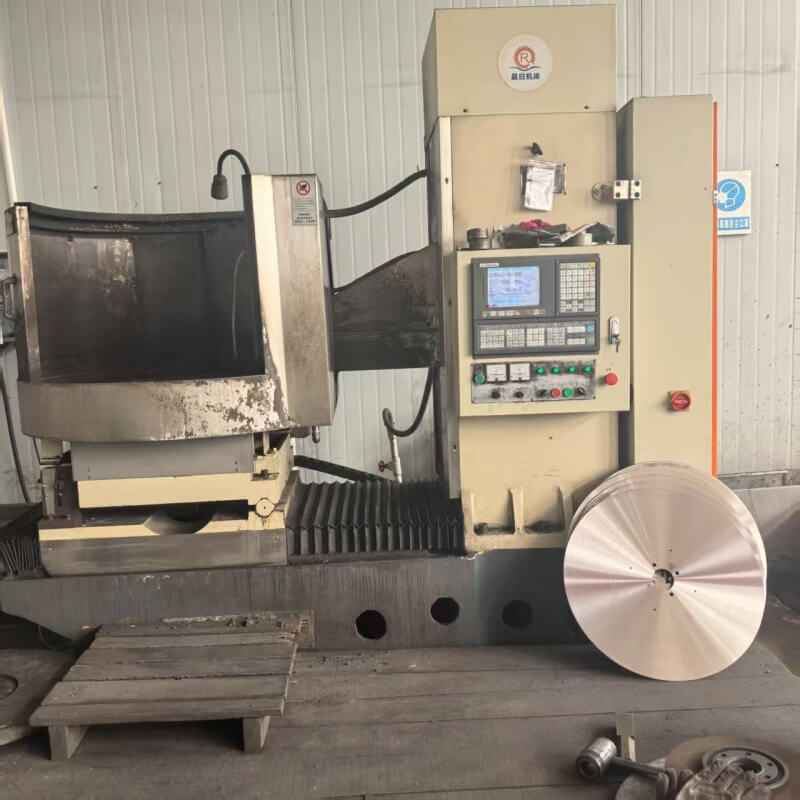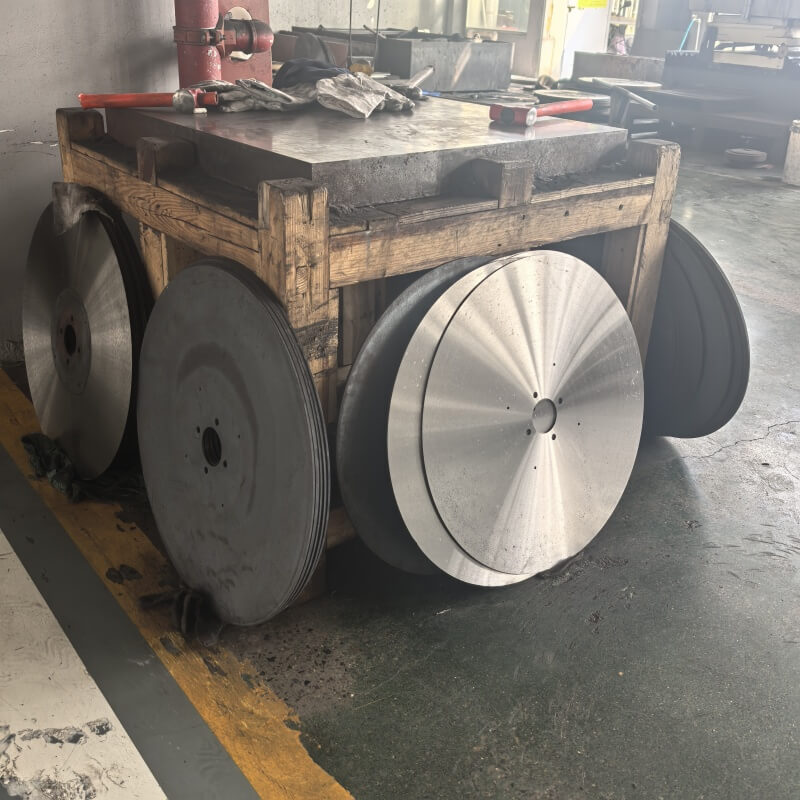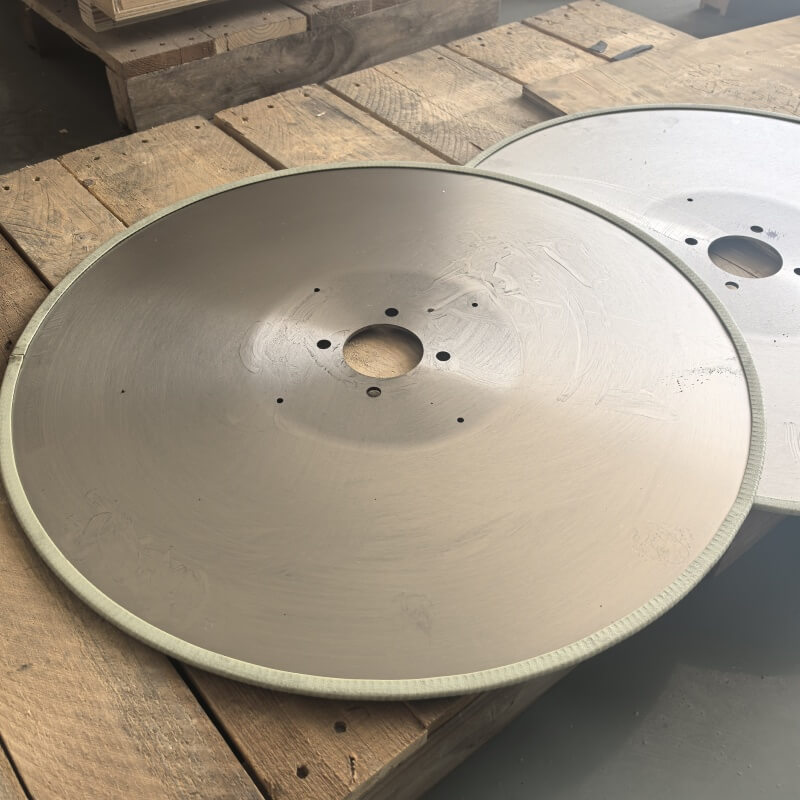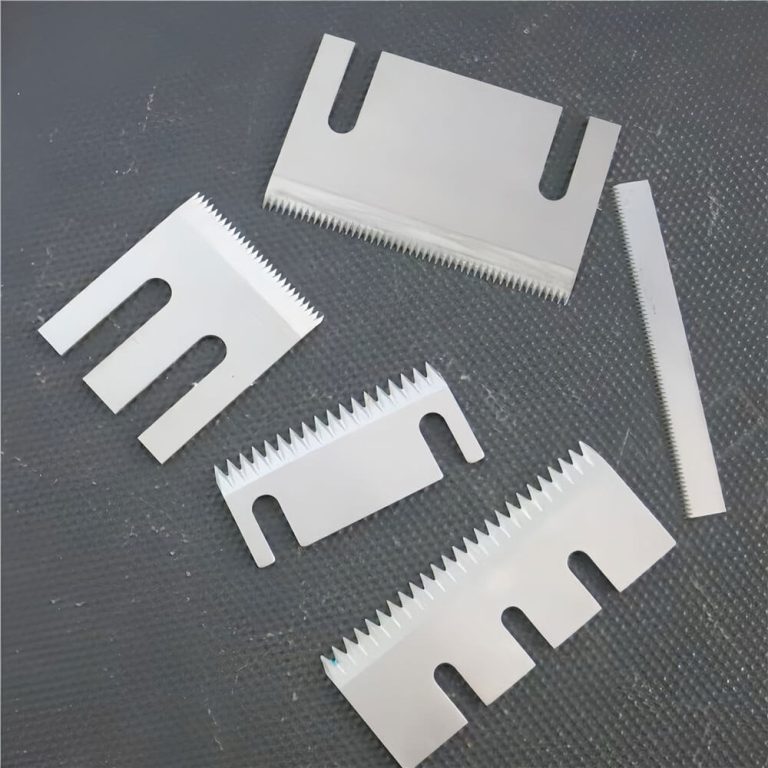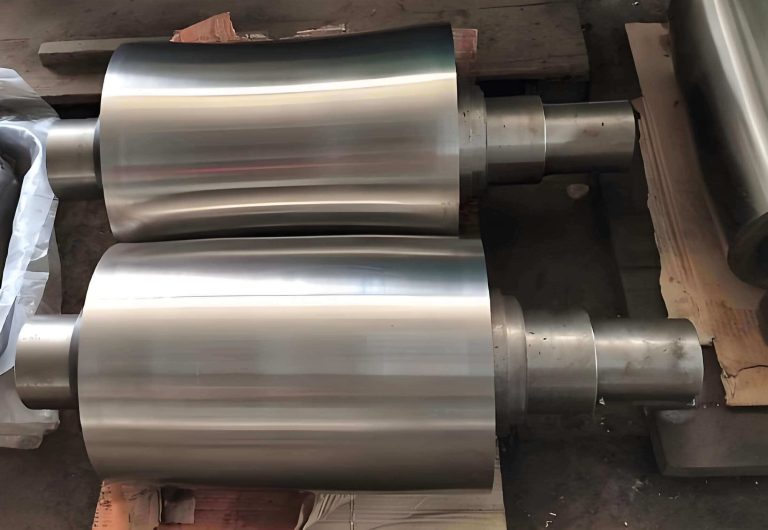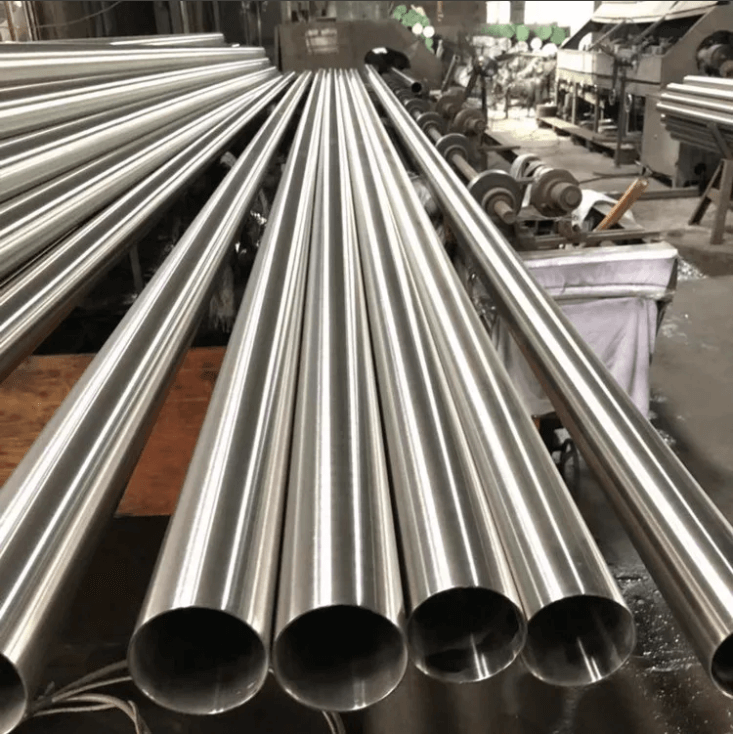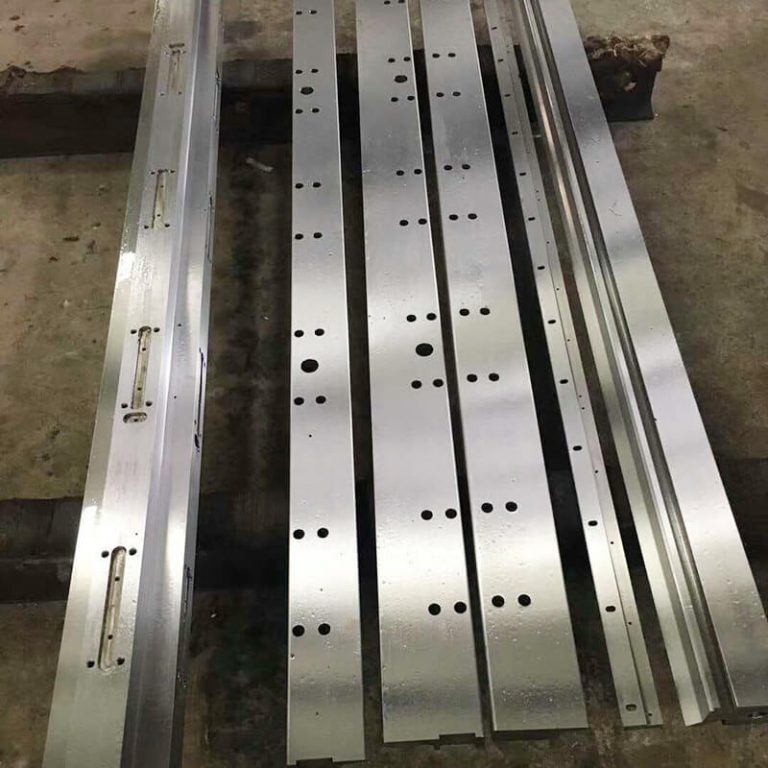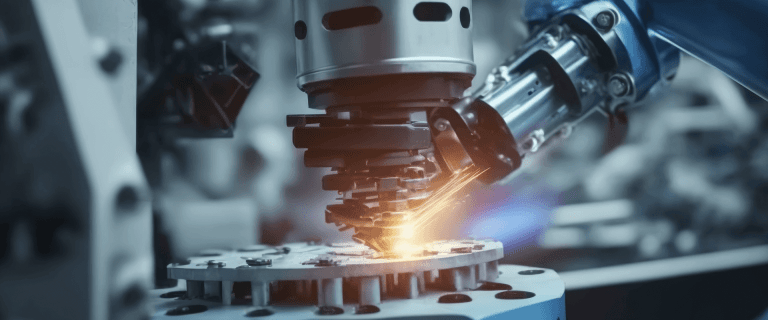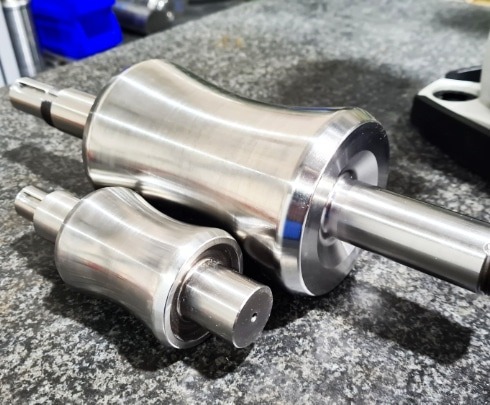Engineering Precision Cutting Blades for Rotary Cutters
In the intricate dance of modern manufacturing, rotary cutters emerge as silent architects of precision, slicing through materials with surgical accuracy. Yet their true power lies in the cutting blades—finely engineered components that blend metallurgy, geometry, and innovation to redefine productivity. From automotive interiors to aerospace composites, these blades are the unsung heroes of material processing. This article dissects their design evolution, material science breakthroughs, and future-ready advancements, revealing how they shape industries in the age of Industry 4.0.
1. The Science Behind the Edge: Design Principles
Rotary cutter blades are not mere discs—they are systems of precision optimized for specific challenges:
• Edge Geometry: A blade’s teeth or bevels are engineered through finite element analysis (FEA)to distribute stress uniformly. For instance,chamfered edgeswith 15°–20° angles reduce material deformation when cutting thin films, while trapezoidal teeth (as seen in Bosch Rexroth’s high-torque blades) enhance grip on rubber and foam.
• Dynamic Balancing: Blades over 200mm in diameter undergolaser-guided balancingto eliminate vibrations at 10,000+ RPM, ensuring 0.01mm tolerance in cut accuracy.
• Modular Adaptability: Leading manufacturers like Shengyuan Machinery now offers egmented blades with replaceable carbide tips, slashing downtime by 70% in high-volume packaging lines.
2. Material Breakthroughs: From Steel to Superalloys
The quest for longer-lasting blades has spurred a materials revolution:
• High-Speed Steel (HSS) 2.0: Advanced grades likeM42 cobalt-HSS(64–66 HRC) now dominate the textile sector, offering 30% higher heat resistance than traditional HSS at 600°C.
• Carbide Composites: Tungsten carbide-cobalt (WC-Co)grades with 10% nickel additives (e.g., Kennametal’sK20S) boost fracture toughness by 25%, ideal for cutting aramid fibers and prepreg composites.
• Ceramic-Metal Hybrids (Cermets): Ti(C,N)-based cermets(e.g., Mitsubishi’sMC6020) combine ceramic hardness (1,800 HV) with metal ductility, reducing edge chipping by 40% in CFRP trimming.
• Diamond-Coated Marvels: Chemical vapor deposition (CVD)-applied nanocrystalline diamond (NCD) coatings (e.g., Oerlikon Balzers’BALINIT® DYLYN) achieve 12,000 Vickers hardness, enabling blade lifespans of 1 million+ cuts in silicon wafer dicing.
3. Industry-Specific Solutions: Tailoring the Cut
Rotary cutter blades thrive in niche applications:
• Automotive Lightweighting: Blades with textured superfinish coatings(Ra < 0.05 μm) slice through multi-layered acoustic foams without delamination, meeting NVH (noise, vibration, harshness) standards for EV interiors.
• Medical Device Fabrication: Ultra-polished stainless steel blades(mirror finish < 0.2 μm Ra) prevent particle shedding when cutting PTFE catheters, a critical requirement for ISO 13485 compliance.
• Renewable Energy: Custom-angled carbide blades(35°–45° rake angles) cut through 80-layer glass fiber laminates for wind turbine blades, reducing blade waste by 18% compared to conventional tools.
• E-Commerce Packaging: Thin-kerf (0.15mm) ceramic blades paired with servo-driven cutters enable zero-margin slitting of 12-micron BOPP films, crucial for sustainable “right-sized” packaging.
4. The Innovation Frontier: Smart, Sustainable, and Self-Optimizing
Cutting-edge technologies are reshaping blade performance:
• AI-Driven Predictive Maintenance: Sensors embedded in Fraunhofer IWU’s “SmartBlade”system monitor strain, temperature, and wear in real time, reducing unplanned downtime by 65% in 24/7 operations.
• Cryogenic Cooling Systems: Liquid nitrogen-cooled blades (e.g.,Linde’s CryoCut) lower cutting temperatures by 200°C, extending carbide tool life by 3x when slicing high-density polyethylene (HDPE).
• 3D-Printed Gradient Alloys: Additive manufacturing enables blades with functionally graded materials—e.g., a diamond-coated edge paired with a shock-absorbing titanium core—for cutting Kevlar/UHMWPE hybrids.
• Circular Economy Models: Sandvik Coromant’s “ReSharp” program uses laser cladding to rebuild worn carbide tips, cutting blade-related CO₂ emissions by 82% compared to virgin production.
5. Overcoming Challenges: The High-Stakes Balancing Act
Manufacturers face critical trade-offs:
• Wear vs. Brittleness: Diamond blades excel in hardness but require ultra-precise mounting(runout < 0.005mm) to avoid catastrophic failure.
• Cost vs. Performance: A singlePCD-tipped bladefor CFRP costs $500–$1,200, necessitating return-on-investment (ROI) calculators to justify adoption.
• Regulatory Hurdles: Food-grade blades must comply with FDA 21 CFR 177.2600(rust resistance) andEC No. 1935/2004(migration limits), driving innovations in electroless nickel-PTFE coatings.
6. The Road Ahead: Toward Autonomous Precision
Emerging trends point to aself-optimizing future:
• Digital Twins: Simulating blade wear in virtual environments (e.g.,Siemens NX) allows manufacturers to test 10,000+ cutting scenarios before physical prototyping.
• Biodegradable Coatings: Water-based zirconia nanocoatings(e.g.,NanoCare AG’s EcoCut) reduce hazardous waste in blade sharpening, aligning with EU’sSCIP databaserequirements.
• Cobalt-Free Carbides: Nickel-bonded tungsten carbides(e.g.,Ceratizit’s XtremeTec) eliminate ethical sourcing concerns while maintaining 92 HRC hardness.
Conclusion: The Edge of Tomorrow
In an era where 0.1mm errors can cost millions, cutting blades for rotary cutters have transcended their role as mere tools. They are nowstrategic assetsthat enable industries to achieve zero-defect manufacturing, sustainability goals, and regulatory compliances imultaneously. As AI, additive manufacturing, and materials science converge, the next generation of blades will not just cut—they will think, adapt, and evolve, pushing the boundaries of what’s possible in material processing.

